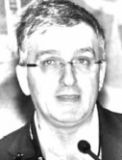ICU Management & Practice, Volume 21 - Issue 1, 2021
Ranieri: What is your opinion on deep sedation using remifentanil and propofol targeting RASS -4?
Maggiore: Before this pandemic, this analgosedation regimen was our standard, and that was usually the way we sedated patients. We do know that COVID-19 patients require prolonged sedation, and we also know, that, in general, the longer the sedation, the longer the patient stays in the ICU. Therefore, deep sedation increases the risk of prolonged sedation.
Jung: I would say that we do use remifentanil for other types of patients that are not COVID-19. We haven't used remifentanil either, exactly for the reason that Prof Maggiore mentioned because most of them would need prolonged sedation. That is why we use sufentanil in our unit.
Ranieri: How often is respiratory muscle paralysis needed in the presence of deep sedation?
Jung: I don't have any exact numbers, but we've seen around 200 COVID-19 patients in my unit. I would say that, in deeply sedated patients, at least 30 to 40% need continuous NMBAs, and around 20 to 25% would need prolonged NMBAs infusion for more than 48 hours.
Maggiore: I agree. We have a similar experience. The rate of patients receiving NMBAs was even higher. But this is dependent on the criteria for admission to the ICU and the severity of patients at ICU admission. All patients in our ICU were severely ill, especially in the beginning. I would say that the percentage of patients receiving NMBAs, in our case, was between 50% and 60% and the use of NMBAs was often prolonged for more than 48 hours.
Ranieri: So in a way, both of you challenge the knowledge that you can replace the use of respiratory muscle paralysis with deep sedation, a concept that some years ago was proposed by several groups?
Maggiore: The problem is not just severity but also the procedures that are undertaken in these patients. For example, for us, it is usual that during pronation, the patients are paralysed. I know that proning is performed without sedation in other instances, but considering the number of patients who were pronated during COVID-19, around 80% in our case, and the high workload for the personnel, I feel it was safer to perform this procedure when patients were paralysed.
Jung: We have the same experience. In our unit, 70% of patients underwent prone positioning with high use of NMBAs at the very early stage of their stay because of the high workload.
Ranieri: Are COVID-19 patients difficult to sedate, and what is your opinion on the use of dexmedetomidine for sedation as an alternative to propofol and morphine-like agents?
Maggiore: We did not find that COVID-19 patients are more difficult to sedate compared to classical ARDS. Also, we did not use dexmedetomidine in the very early phase. We usually use this drug when shifting to a light sedation strategy.
Jung: I agree. There are a lot of studies out there that have shown that dexmedetomidine may not be the best agent to provide deep sedation but can be an alternative for light sedation. I wouldn't say that it's propofol versus dexmedetomidine at the very early stage.
Ranieri: Any experience with dexmedetomidine with NIV?
Maggiore: Not for us because we applied non-invasive mechanical respiratory support almost exclusively outside the ICU and management of sedation in this scenario would be even more complicated.
Ranieri: What is your experience in the use of EEG monitoring to optimise sedation and patient comfort?
Maggiore: We have no experience of this. These patients received deep sedation during the very early phase,but we have not used this technique. When a patient is improving, I believe that the best strategy is to try to stop sedation as soon as possible and continue to monitor clinically the neurological status regularly.
Jung: In our unit, we use the BISPECTRAL index in patients who were paralysed within a target of 40 to 60. It's not a magical tool, but it can be useful.
Ranieri: What is your opinion on the use of volatile sedation?
Jung: Our team decided not to use volatile sedation during the first wave mainly because of the risk of airborne and droplet transmission to the healthcare workers. But in our usual practice otherwise, we use it quite a few times a year. We have also used it during the second wave for a patient who was really difficult to sedate and who needed a very high dose of propofol. So, we switched to volatile sedation, which worked. But overall, we chose not to use a lot of volatile sedation during COVID-19 because of the risk of infection transmission.
Maggiore: We are introducing this technique. Therefore, we do not have sufficient experience with this.
Ranieri: Are there any differences between the first and second waves in terms of the need for sedation? What has been your experience?
Maggiore: We have not observed any difference. In our experience, patients we have seen during the second wave are similar to the first wave, therefore there has not been much difference in terms of sedation.
Jung: I agree. We have also not observed any difference.
Ranieri: Do you think that the sedation policy is strongly influenced by the level of organisation or support that we are able to provide in terms of human resources? If you have a full set of ICU with the required staff in terms of nurses and physicians, you may use a more sophisticated sedation policy. But if you are running 150 ICU beds with nurses coming from the operating theatre, or there is an intensivist recruited from the urologist floor, you may use a more basic approach for sedation. What do you think?
Maggiore: I completely agree. This is also true during the management of classic ICU patients, not just COVID-19, for example, during procedures like weaning, and also for ARDS management. This is not something new, and yes, I agree.
Jung: We usually use a nurse driven protocol to lighten sedation as much and as early as possible. With such a high workload and the hygiene precautions it is however difficult to enter so many times in ICU rooms to adjust sedation. There is therefore a temptation of using like you said a much easier and more basic sedation protocol. However I’d really recommend to reassess the need of deep sedation at least every 4h both for the patients outcome and to optimise ICU length of stay.
Ranieri: You discussed the ROSE Trial regarding the use of NMBAs in patients with ARDS and also compared it to the ACURASYS Study. Would you like to highlight the difference between the two trials and summarise apparently contradictory results?
Jung: There are many differences between the two trials. In the ROSE trial, the PEEP level was very high compared to the ACURASYS trial. Patients could be enrolled earlier in the ROSE trial, and ventilation strategy was also different between the two trials. What I would suggest, as the authors of these studies did, is that if you start using NMBAs in ARDS patients, you may want to reassess its indication at least every day or every 24 hours to make sure that the patient really needs an NMBA because the two trials were very different from one another.
Maggiore: The two studies actually compared totally different things because the level of sedation was different, and the level of PEEP was higher in the ROSE trial. We have data showing that maintaining some form of spontaneous breathing with a high PEEP level may be protective for the lung. This may be one of the reasons the results of the ROSE trial are quite different as compared to the ACURASYS trial.
Ranieri: There is a perception that COVID-19 patients are more complex than others, that the level of stress these patients are experiencing is different than the usual level of stress in regular patients admitted to the ICU. There has also been an exponential increase in workload. The patient's stress and the patient's need for sedation are probably tied to the healthcare system that has also reached the limits. Is that why these patients appear to be different? Or are these patients similar to other ICU patients with the same need in terms of sedation, mechanical ventilation, and it is the healthcare workers who are different. What do you think?
Maggiore: I completely agree. We have always been aware of the limits of the system in terms of beds and equipment. However, the real issue is the personnel in terms of numbers, competencies, and workload. We have data showing that healthcare workers during the first wave of the pandemic had, in fact, a very high level of burnout. This is a fact.
Jung: I would not say that these patients are more difficult to care about than the usual virus associated ARDS with extra precautions taken regarding venous thrombosis. I would however say that the massive volume of patients, the risk of contamination and the high workload have made things very tough and demanding worldwide.






















